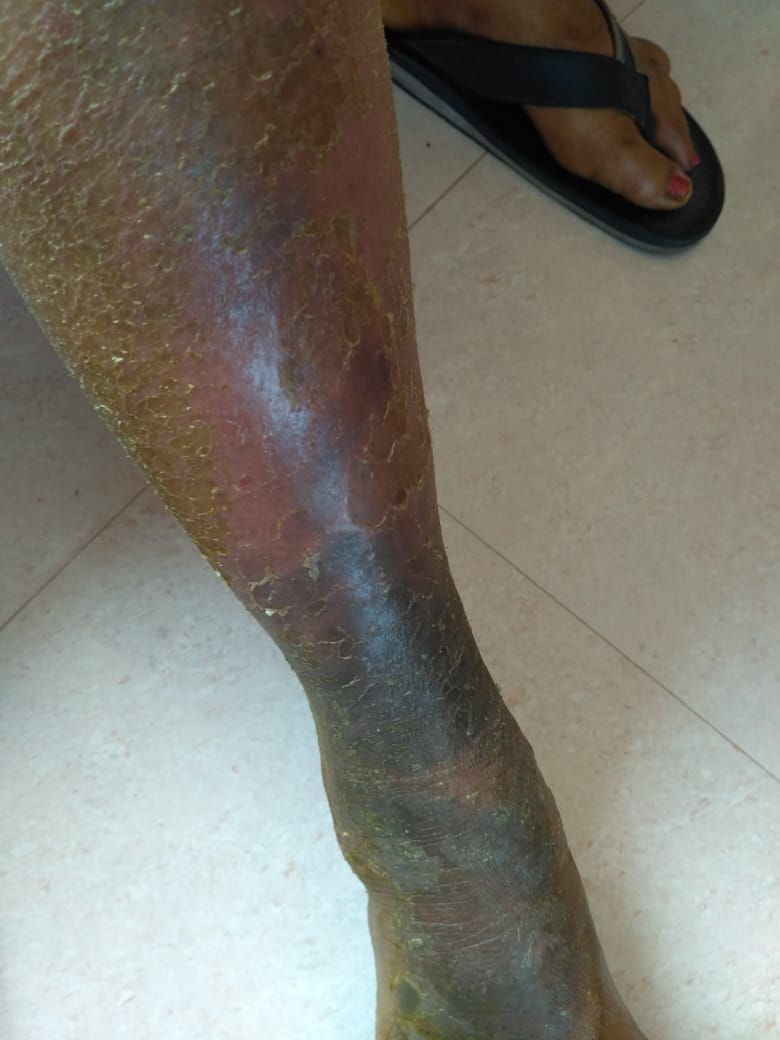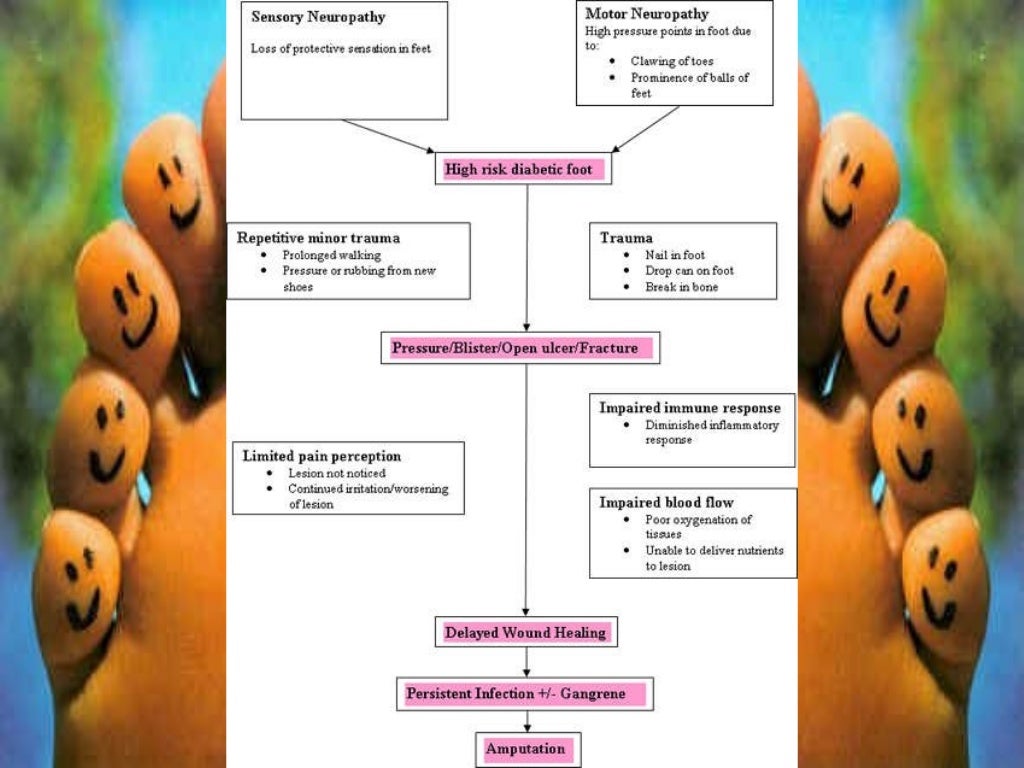Diabetes Gangren
Diabetes And Gangrene Coding Guidelines Icd 10
Diabeticgangrene nursing care plan nursing care plan for diabetic gangrene gangrene is a serious and potentially life-threatening condition that arises when a considerable mass of body tissue dies (necrosis). this may occur after an injury or infection, or in people suffering from any chronic health problem affec. If you have diabetes, you have an increased risk of developing gangrene. high blood sugar levels can damage your nerves, which can cause a loss of sensation in the affected area. this can make it. When many people hear the term “ gangrene,” they may think of toes or fingers being affected by loss of blood flow, infection, or hypothermia, which means the person’s body temperature has dropped,.

Gangrene And Diabetes
A certain type of diabetes medicine called sodium-glucose cotransporter-2 (sglt2) inhibitor doctors can find the cause of fournier’s gangrene in about 90% of the cases. symptoms. Apr 24, 2015 · gangrene is a condition characterized by obstructed blood supply that causes death of the tissue. it can occur in any part of the body but typically starts in the extremities like feet, fingers and. See more videos for diabetes gangrene. Here are a few suggestions to help you reduce your risk of developing gangrene: 1. care for your diabetes. if you have diabetes, make sure you examine your hands and feet daily for cuts, sores and signs of infection, such as redness, swelling or drainage. diabetes gangren ask your doctor to examine your hands and feet at least once a year, and try to maintain control over your blood sugar levels. 2. lose weight. excess pounds not only put you at risk of diabetes but also place pressure on your arteries, const


Gangrene Symptoms And Causes Mayo Clinic
More diabetes gangrene images. When gangrene affects your skin, signs and symptoms may include: 1. skin discoloration — ranging from pale to blue, purple, black, bronze or red, depending on the type of gangrene you have 2. swelling or the formation of blisters filled with fluid on the skin 3. a clear line between healthy and damaged skin 4. sudden, severe pain followed by a feeling of numbness 5. a foul-smelling discharge leaking from a sore 6. thin, shiny skin, or skin without hair 7. skin that feels cool or cold to the t Diabetes can lead to many complications, such as gangrene and even foot amputation. in diabetes there is an inability to control blood sugar that results in spikes and drops. Gangrene refers to the death of body tissue due to either a lack of blood flow or a serious bacterial infection. gangrene commonly affects the extremities, including your toes, fingers and limbs, but it can also occur in your muscles and internal organs. your chances of developing gangrene are higher if you have an underlying condition that can damage your blood vessels and affect blood flow, such as diabetes or hardened arteries (atherosclerosis). treatments for gangrene include surgery to rem

There is a coding clinic 4q 2017, pg. 102 that addresses this issue. when a patient has gas gangrene with diabetic pvd an additional code for gas gangrene a48. 0 is assigned because it describes the type of gangrene and diabetes gangren provides detail about the patient's condition.
Gangrene may occur due to one or some of the following causes: 1. lack of blood supply. your blood provides oxygen, nutrients to feed your cells, and immune system components, such diabetes gangren as antibodies, to ward off infections. without a proper blood supply, cells can't survive, and your tissue decays. 2. infection. if bacteria thrive unchecked for long, infection can take over and cause your tissue to die, causing gangrene. 3. trauma. wounds that are traumatic, such as gunshot wounds or crushing inj Gangrene means permanent death of body tissues. if you have diabetes that is not being controlled, there is a chance that you may get gangrene. the basic culprit behind gangrene in diabetics is high blood sugar. high blood sugar turns into a toxin for your blood vessels and starts to damage them.
Diabetic Gangrene Causes Symptoms Treatment
Gangrene can lead to scarring or the need for reconstructive surgery. sometimes, the amount of tissue death is so extensive that a body part, such as your foot, may need to be removed (amputated). gangrene that is infected with bacteria can spread quickly to other organs and may be fatal if left untreated. Dry gangrene is characterized by dry and shriveled skin ranging in color from brown to purplish blue or black. dry gangrene may develop slowly. it occurs most commonly in people who have arterial blood vessel disease, such as atherosclerosis, or in people who have diabetes. Gangrene is a condition characterized by obstructed blood supply that causes death of the tissue. it can occur in any part of the body but typically starts in the extremities like feet, fingers and.
Topics: atherosclerosis, diabetes, gangrene. many people are unaware of the connection between diabetes and gangrene. however, education on these topics are very important because it can be the different between life and limb. gangrene can quickly create a need for limb amputation if it is not diagnosed and treated within time. Diabetes and gangrene. click here to get accurate information about the link between diabetes and gangrene and its herbal treatment provided by go gangrene®. if you are suffering from diabetes, then there is a chance that you develop gangrene in any stage of life. this is because diabetes is one of the major risk factors of gangrene. Gangrene in diabetes is an extreme medical condition causing decay of the tissues resulting from the interrupted blood circulation. in diabetes, pancreas fails to produce significant amount of insulin, required to control levels of blood sugar. high levels of blood sugar can damage different tissues in the body, causing gangrene. Diabetic gangrene — causes, symptoms, treatment diabetes gangren about one in three diabetic individuals will surely develop a foot ulcer during their lifetime, which if left untreated may develop into diabetic.
Gangrene is a medical condition, which results due to the death of the body tissues. diabetic gangrene is a condition which occurs in diabetics and the cause of which is obstructed blood supply due to tissue death or tissue damage. diabetic gangrene can also occur due diabetes gangren to infection, underlying injury or illness caused by poor blood circulation as a result of diabetes to different body parts. Diabetes can cause gangrene in the internal organs as well. talk to your doctor if you notice any of these symptoms. gangrene is a serious issue and can often be life threatening. gangrene can be treated with: antibiotics: antibiotics are medicines that prevent bacterial infection and may help improve wound healing.
Gangrene is the most dreaded form of diabetic foot. there is death or decay of the affected foot. gangrene usually affects diabetics with high and uncontrolled blood sugar. See full list on mayoclinic. org. Fournier’s gangrene or genital gangrene as it’s often referred to develops when bacteria gets into the system from a tear or cut in the skin. it will spread quickly and destroys any tissue it comes into contact with. people who have diabetes are already more susceptible to gangrene because of a lower immunity system and reduced blood flow.
Komentar
Posting Komentar